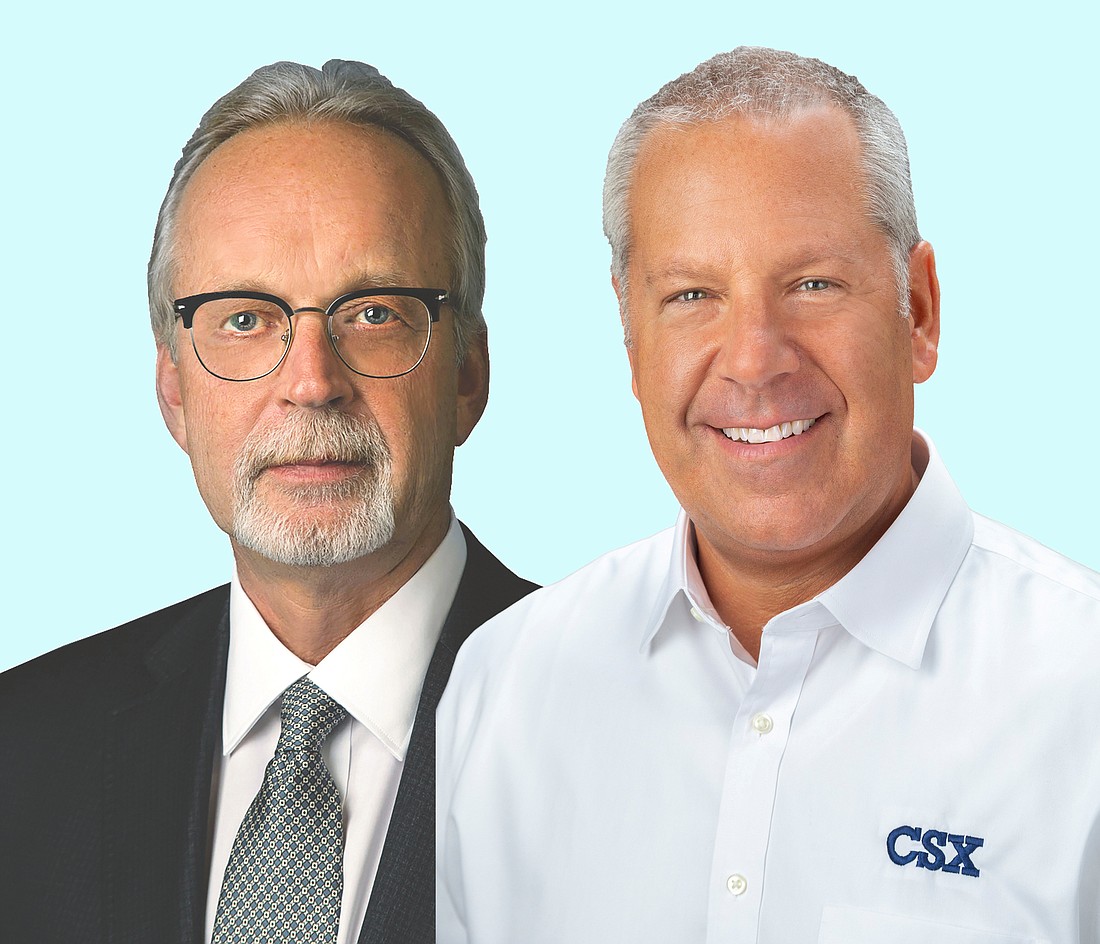
When Jim Foote became chief executive of CSX Corp. at age 63 in December 2017, speculation began almost immediately about his eventual successor.
The question came up at one of his first public appearances as CEO, at a March 2018 investor conference sponsored by J.P. Morgan.
Foote said he was looking at CSX’s management ranks to “give the guys inside a shot” at proving themselves.
So, it was a surprise Sept. 15 when CSX announced it was not only going outside the company but also outside the railroad industry for its next chief executive.
Longtime auto industry executive Joseph Hinrichs will take the helm at Jacksonville-based CSX on Sept. 26.
Hinrichs, 55, spent almost two decades with Ford Motor Co., retiring as president of its automotive operations in February 2020.
“Joe was instrumental to Ford’s ability to survive the Great Recession a decade ago without bankruptcy or taxpayer bailout, and successfully headed Ford’s operations in Asia Pacific and North America,” then-Ford CEO Jim Hackett said in a news release when Hinrichs’ retirement was announced.
“Most recently, Joe oversaw our global portfolio of iconic vehicles, helped forge a long-term, mutually beneficial relationship with the UAW and was regularly sought out as an authority and promoter of smart global trade,” Hackett said.
Hinrichs was known for negotiating several new labor contracts with the United Auto Workers during his tenure at Ford.
His hiring at CSX was announced just hours after the White House announced an agreement between major U.S. railroads and several rail unions on new contracts, averting a possible strike.
Before joining Ford, Hinrichs spent 10 years with General Motors. He left GM in 1998 for a position with a private equity firm.
According to a 2009 Detroit News profile, Hinrichs missed the auto industry and took a job with Ford in 2000.
Although he is new to the railroad industry, analysts aren’t saying his hiring signals a change in direction for CSX.
“While there is a lot to learn about Mr. Hinrichs, we sense his experience and perspective could prove complementary to CSX as the company continues to pivot towards a framework focused on volume growth,” BMO Capital Markets analyst Fadi Chamoun said in a research note.
Although analysts have pressed Foote with questions about succession plans for years – and Foote consistently deflected the speculation – Wall Street was caught off guard by the Sept. 15 announcement.
“The transition timing was earlier than expected, and Foote was a highly respected leader across the industry,” Baird analyst Garrett Holland said in a research note.
“We do not expect a meaningful shift in strategy or execution at CSX, where the company had been making better-relative progress in restoring staffing levels,” he said.
Staffing has been a major concern at CSX as it restored service after the coronavirus pandemic.
A week before the new CEO was announced, Foote said at an investor conference that CSX had about 6,800 train and engine employees and he was confident the company would reach its full staffing level of 7,000 by the end of this year.
Chamoun said Foote was doing a good job handling railroad operations despite the industry’s challenges.
“While recent supply chain issues have affected operations, our benchmarking work has shown that CSX consistently delivers industry-leading operating performance,” he said.
The change in leadership is making some investors nervous but Chamoun sees some positives in the transition.
“An incoming CEO from an industry that is highly competitive, capital intensive, and operates with a unionized workforce such as the automotive industry may have a lot to offer CSX, which operates in a functioning duopoly where innovation has moved at a moderate pace historically,” he said.
“We wouldn’t be too quick to dismiss the value of change and note the strong bench and PSR culture that has been embedded in the company,” he said.
PSR is precision scheduled railroading, an operating system implemented by Foote’s predecessor, Hunter Harrison.
Harrison brought Foote in as chief operating officer in November 2017, and Foote was promoted to CEO when Harrison died in December 2017.
Although Foote is retiring as CEO on Sept. 26, he will stay on as an adviser through March 31, 2023, to assist in the transition.
Foote expressed confidence in Hinrichs as the appointment was announced.
“He enabled Ford to execute world-class manufacturing on a global scale, including prioritizing exceptional customer service,” Foote said in a news release.
“In addition to leading complex businesses over his 30-year career, he has proven that he understands how to prioritize safety and efficiency in an industry with dynamics that are similar to those we are navigating today in rail,” he said.
Hinrichs indicated in the news release that CSX’s strategy will remain basically the same.
“My focus on day one will be to continue to execute on the strategy the team has identified: leveraging CSX’s proven operating model as a leader in the railroad industry, to drive growth through innovation, harness transformative technology and build a one-team workforce through an engaging and inclusive culture,” Hinrichs said.